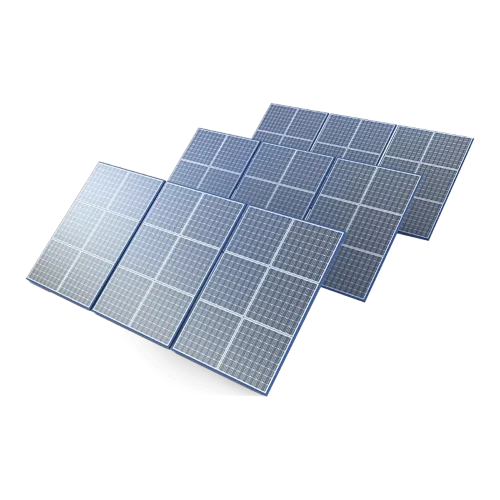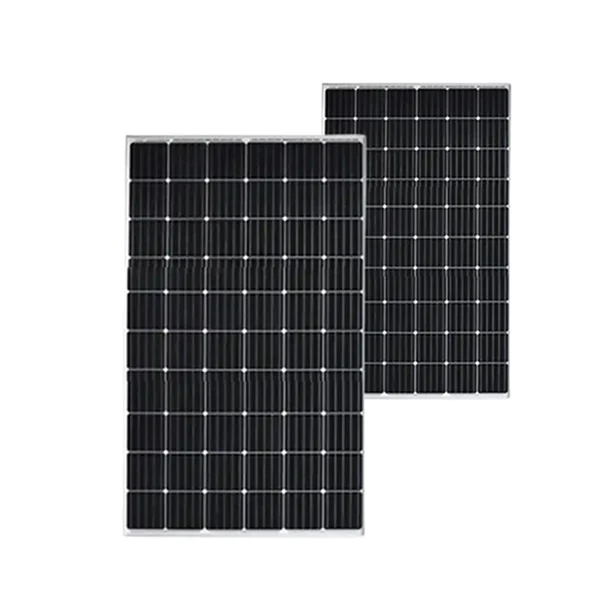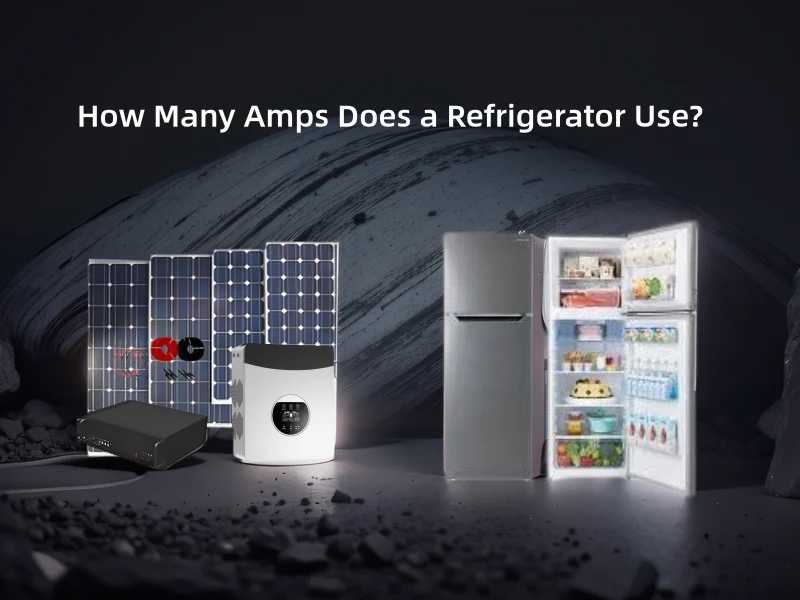Solar panels are durable and efficient in generating clean energy, but no technology is invincible. The performance, safety, and lifespan of solar panels can be severely affected by any form of damage. But what happens if you damage a solar panel? Let's go into detail about the consequences, causes, and preventive measures.
How Damage Affects Solar Panel Performance
1. Efficiency Drops
Even minor damage, such as cracks or scratches on the surface, can reduce a solar panel's output.
- Micro-cracks: These tiny fractures may seem insignificant, but they can reduce power output by up to 10% Over time, this can escalate as water, dirt, or other contaminants infiltrate the cracks, causing further degradation.
- Severe damage: Energy production on these panels has dropped by as much as 30–50%due to extensive physical damage such as shattered glass or exposed wiring.
2. Safety Risks
Damaged solar panels can pose significant safety hazards:
- Electrical risks: Exposed wiring or internal shorts may cause electrical shocks or even fires.
- Water intrusion: Cracks in the glass allow moisture to enter, potentially leading to corrosionor electrical arcing.
Types of Solar Panel Damage

1. Physical Impact
- Weather Events: Hailstorms, strong winds, and falling debris are common culprits.
- Accidents: Improper installation and poor maintenance, along with mistakes in handling during transportation, might cause frames to bend or the glass to crack.
2. Environmental Degradation
- Heat Stress: Extreme temperature changes cause materials to expand and contract, leading to thermal cracks.
- UV Exposure: Long-term exposure to sunlight can deteriorate these layers over time.
3. Electrical Damage
- Hot Spots: Faulty wiring or shading can create hot spots that overheat certain sections of the panel, leading to burns or material failure.
What Should You Do If a Solar Panel Is Damaged?
Step 1: Assess the Damage
Start by visually inspecting the panel for signs of:
- Cracks or breaks in the glass.
- Discoloration or burn marks.
- Error messages on the inverter or monitoring system.
Step 2: Disconnect the System
If you suspect significant damage, turn off the system to avoid electrical risks.
Step 3: Call a Professional
- Repair: In cases of minor damage, such as small cracks, repair might be possible with special adhesives or protective films.
- Replace: Panels with serious damage, especially internal component damage, will most likely need to be replaced.
Consequences of Ignoring Damaged Panels
- Performance Degradation: A damaged panel in a series connection can reduce the efficiency of the entire string, as the weakest panel dictates the output.
- Higher Costs: Left unaddressed, minor damage can worsen, requiring more expensive repairs or replacements later.
- Environmental Risks: Damaged panels may leach harmful materials, such as cadmiumor lead, into the environment if not properly handled.
Preventing Solar Panel Damage
1. Regular Maintenance
Routine cleaning and inspections can identify and address potential issues early.
- Remove debris, such as leaves or bird droppings.
- Check for loose connections or visible wear.
2. Protective Measures
- Impact-resistant glass: Panels made with tempered glass are more resistant to breakage.
- Protective covers: Cover panels during extreme weather conditions or maintenance.
3. Strategic Installation
- Avoid shading: Avoid installing panels in areas that may be affected by debris or overhanging tree branches.
- Tilted mounts: Proper angling helps water and debris slide off naturally.
Insurance and Warranty Coverage
1. Insurance
Most homeowners' policies cover damage to solar panels resulting from storms or accidents. Check your policy to see that you have adequate protection.
2. Warranty
Most solar panels have a warranty of 25 years or more, but they don't cover all damages. Most of the time, the warranty covers manufacturer defects but not always accidental or environmental damage.
Recycling Damaged Solar Panels
Damaged panels shouldn’t end up in a landfill. Recycling options are increasingly available to:
- Recover valuable materials like siliconand aluminum.
- Safely dispose of hazardous components, such as cadmium telluridein thin-film panels.
Case Study: Real-Life Example of Solar Panel Damage
In 2017, a solar farm in Texas was hit by a severe hailstorm, damaging over 4,000 panels. While the farm continued operating at reduced capacity, the repairs cost hundreds of thousands of dollars.
Lesson learned: It has invested in hail-resistant panels and weather monitoring systems ever since to prevent any repeat of losses.
Final Thoughts
Solar panel damage is quite serious, but with proper care, it allows for preventive measures that, when taken in due time, can minimize its effect. If you are wondering what happens if you damage a solar panel, the answer lies in understanding the risks and taking prompt steps to address them. After all, a little maintenance today can save you loads of trouble-and money-down the line.












 Afrikaans
Afrikaans Albanian
Albanian Amharic
Amharic Arabic
Arabic Armenian
Armenian Azerbaijani
Azerbaijani Basque
Basque Belarusian
Belarusian Bengali
Bengali Bosnian
Bosnian Bulgarian
Bulgarian Catalan
Catalan Cebuano
Cebuano Chichewa
Chichewa Chinese (Simplified)
Chinese (Simplified) Chinese (Traditional)
Chinese (Traditional) Corsican
Corsican Croatian
Croatian Czech
Czech Danish
Danish Dutch
Dutch English
English Esperanto
Esperanto Estonian
Estonian Filipino
Filipino Finnish
Finnish French
French Frisian
Frisian Galician
Galician Georgian
Georgian German
German Greek
Greek Gujarati
Gujarati Haitian Creole
Haitian Creole Hausa
Hausa Hawaiian
Hawaiian Hebrew
Hebrew Hindi
Hindi Hmong
Hmong Hungarian
Hungarian Icelandic
Icelandic Igbo
Igbo Indonesian
Indonesian Irish
Irish Italian
Italian Japanese
Japanese Javanese
Javanese Kannada
Kannada Kazakh
Kazakh Khmer
Khmer Korean
Korean Kurdish (Kurmanji)
Kurdish (Kurmanji) Kyrgyz
Kyrgyz Lao
Lao Latin
Latin Latvian
Latvian Lithuanian
Lithuanian Luxembourgish
Luxembourgish Macedonian
Macedonian Malagasy
Malagasy Malay
Malay Malayalam
Malayalam Maltese
Maltese Maori
Maori Marathi
Marathi Mongolian
Mongolian Myanmar (Burmese)
Myanmar (Burmese) Nepali
Nepali Norwegian
Norwegian Pashto
Pashto Persian
Persian Polish
Polish Portuguese
Portuguese Punjabi
Punjabi Romanian
Romanian Russian
Russian Samoan
Samoan Scottish Gaelic
Scottish Gaelic Serbian
Serbian Sesotho
Sesotho Shona
Shona Sindhi
Sindhi Sinhala
Sinhala Slovak
Slovak Slovenian
Slovenian Somali
Somali Spanish
Spanish Sundanese
Sundanese Swahili
Swahili Swedish
Swedish Tajik
Tajik Tamil
Tamil Telugu
Telugu Thai
Thai Turkish
Turkish Ukrainian
Ukrainian Urdu
Urdu Uzbek
Uzbek Vietnamese
Vietnamese Welsh
Welsh Xhosa
Xhosa Yiddish
Yiddish Yoruba
Yoruba Zulu
Zulu